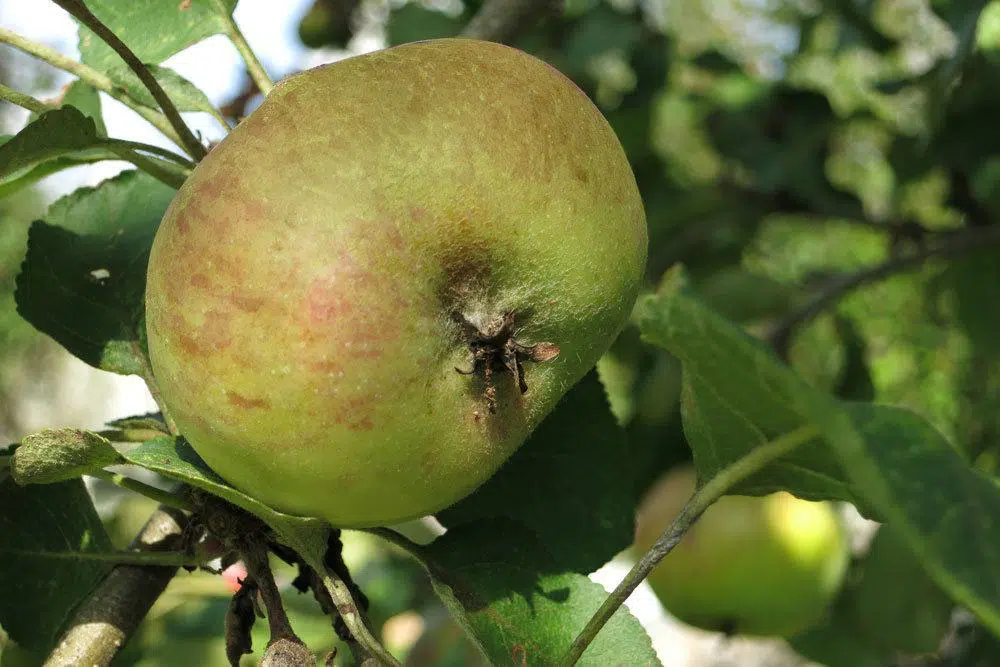There are several reasons why suddenly unripe apples depart from the tree. Possibly the weather was to blame or a branch is broken. Whatever the reason, it is always annoying, because the fruit unfortunately does not ripen. But don’t panic, you can still process them and don’t have to dispose of them.
Contents
Checking for maggot infestation
Before you start using the unripe fruits, you should first check for maggot infestation. Sometimes this is to blame for the involuntary harvest and then the fruit belongs to be disposed of. To do this, simply cut open an apple and look at its interior. If there are no maggots here, there is another reason for the fall from the tree.
Consumption
Do not eat unripe apples raw
You should refrain from eating unripe fruit raw, as this can cause abdominal discomfort. Although no real poisonous effect is to be expected, the fruits are nevertheless too acidic and can lead to discomfort. You can make the fruits more digestible by heating them and then they can be eaten without problems.
Processing
Jelly from unripe apples
A delicious apple jelly from your own garden is a tasty way to use up fallen apples. The jelly keeps for many months and can also be used to enhance desserts.
The ingredients for apple jelly:
four kilograms of unripe fruit
1.5 kilograms of sugar
3 tablespoons of lemon juice
Preparation:
First, carefully peel the fruit and cut away rotten parts. Then cut them into pieces and put them with 500 ml. Water in a large saucepan. Close the pot with the lid and let the apples cook for 40 minutes. After this period of time, the fruit should have disintegrated. Now take a large you to hand and line this with a muslin cloth. Place a large bowl underneath it. Pour the apple juice into the sieve and let it drain for one night.
Use the apple juice obtained
After one night, the apple juice is drained and can be made into jelly. To do this, measure the amount of juice and add the same amount of sugar (1 liter of apple juice = 1 kilogram of sugar). Add the lemon juice and let the mixture cook on low heat for about 30 minutes. Remove a drop of the juice every now and then, put it on a plate and wait to see if it gels already. If it does, you can fill the apple jelly into jars and put them upside down with the lid closed for at least 4 hours.

Possibilities
Process unripe apples as a gelling agent
Another good way to use unripe apples is to turn them into a gelling agent. The pectin contained in unripe fruit is an optimal helper when it comes to making jams and jellies.
Processing unripe apples into apple pectin
Apple pectin is a wonderful gelling agent, which can be used to make jams. The more unripe an apple is, the higher the amount of pectin. If you use ripe fruit, only the peel and core are used. However, if you use unripe fruit, you can use the entire fruit.
The recipe for apple pectin:
- 1.4 kilograms of unripe fruit
- 750 ml of water
- large saucepan including lid
- clean gauze diaper
- canning jars
- large container for draining
How to do it:
First you need to clean the apples thoroughly, remove the stems and peel them. Now remove the core and chop the pulp. The core, peel and pulp are brought to a boil in the saucepan and must simmer for about 30 minutes. When the apple mixture has softened, you can drain it over the muslin cloth and let it drain for about eight hours.
Important additional tips for making pectin:
- do not squeeze the apple mass manually
- for 1.4 kilograms of apples you will get about 500 ml of liquid
- after eight hours you can reduce the liquid by half
Do not eat raw, but process
As you can see, you do not have to dispose of fallen apples that have not yet reached the necessary ripeness status. Provided there is no maggot infestation, you can make a variety of delicacies from the fruit.










